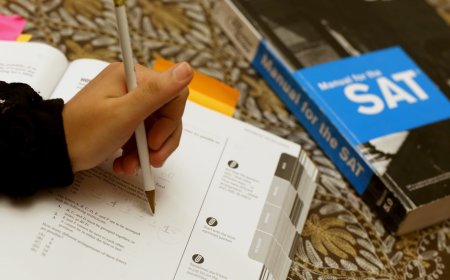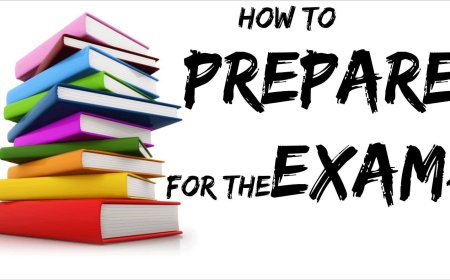Cognitive load theory examples for teachers
Cognitive Load Theory (CLT) guides teachers in creating lessons that enhance learning by reducing unnecessary mental effort. It emphasizes the importance of clear, direct instruction when introducing new concepts, along with plenty of practice. Teachers are encouraged to simplify complex information and use clear visuals to limit distractions. By managing both useful (germane) and unnecessary (extraneous) cognitive load, educators can better support student understanding and long-term retention.

Cognitive Load Theory (CLT) is an educational framework that examines the men- tal effort required for learning and understanding information. Developed by John Sweller in the 1980s, the theory posits that effective instructional design should account for the limitations of working memory to enhance student learning out- comes.[1] CLT identifies three types of cognitive load: intrinsic, extraneous, and germane, each affecting how learners process information. The theory is notable for its practical applications in education, where teachers can implement strategies to manage cognitive load effectively, thereby improving retention and comprehension among students.[2]
Intrinsic cognitive load relates to the complexity of the material being learned, influenced by a student's prior knowledge and the inherent difficulty of the content.[3] Extraneous cognitive load arises from poorly structured instructional materials or irrelevant information, which can detract from the learning experience.[4] Germane cognitive load, conversely, refers to the mental effort invested in processing and integrating new information meaningfully, supporting long-term retention and un- derstanding.[5] Educators are encouraged to tailor their approaches by reducing extraneous load and promoting germane load through strategies such as chunking information, scaffolding, and using visual aids.[6]
The significance of CLT lies in its evidence-based strategies that help educators create more effective learning environments. Research demonstrates that when teachers employ techniques informed by cognitive load theory, students are better able to engage with complex material and achieve higher academic success.[7] How- ever, challenges persist, such as misconceptions about cognitive load and variability in student perceptions, which can hinder the implementation of these strategies in diverse educational settings.[8]
Prominent controversies surrounding cognitive load theory involve its interpretation and application across different disciplines, as well as debates regarding the mea- surement of cognitive load itself.[9] Critics argue that while CLT provides a robust framework for understanding learning processes, it may oversimplify the complexities of teaching and learning in real-world contexts. Nonetheless, the theory continues to
Types of Cognitive Load
Cognitive Load Theory (CLT) identifies three primary types of cognitive load that impact learning: intrinsic cognitive load, extraneous cognitive load, and germane cognitive load. Each type plays a distinct role in the learning process and has implications for instructional design.
Intrinsic Cognitive Load
Intrinsic cognitive load refers to the inherent difficulty and complexity of the material being learned, which is influenced by the learner's prior knowledge and the nature of the information presented[1]. Tasks with a high intrinsic load may challenge stu- dents significantly, particularly if they lack the necessary foundational knowledge[2]. Educators can manage intrinsic load by tailoring instructional materials to align with students' existing knowledge levels, thereby facilitating a more effective learning experience[2].
Examples of Intrinsic Load
For instance, when teaching a complex mathematical concept, students with a strong background in arithmetic may experience a lower intrinsic load compared to those who are still developing these foundational skills. This distinction highlights the importance of scaffolding in instruction, allowing educators to present material in a way that builds on students' existing knowledge while minimizing cognitive strain[3].
Extraneous Cognitive Load
Extraneous cognitive load is the mental effort associated with processing information that does not contribute to the learning task at hand. This type of load can arise from poorly structured instructional materials, irrelevant information, or distractions during the learning process[4][5]. High levels of extraneous load can inhibit learning by overwhelming working memory capacity without enhancing comprehension or retention[6].
Strategies to Reduce Extraneous Load
Teachers can minimize extraneous cognitive load by ensuring that instructional materials are organized clearly and presenting information in a logical sequence. For example, avoiding information overload by breaking complex tasks into smaller, manageable steps can help students focus on the essential elements of the learning material[7].
Germane Cognitive Load
Germane cognitive load involves the mental effort required to process and integrate new information meaningfully. This load supports the construction of knowledge structures and the transfer of learning to long-term memory[5][8]. Activities that promote germane load include self-explanation, retrieval practice, and creating visual aids like diagrams and flowcharts, which encourage deeper engagement with the material[8][9].
Importance of Germane Load
Unlike intrinsic and extraneous load, which can hinder learning if not managed effectively, germane load is beneficial and contributes to improved learning out- comes. Educators can intentionally design activities that promote germane load by incorporating collaborative learning opportunities and encouraging students to reflect on their understanding of the material[9]. By doing so, teachers foster an environment conducive to deeper learning and knowledge retention.
Practical Applications of Cognitive Load Theory in Teaching
Cognitive load theory (CLT) provides valuable insights for educators seeking to optimize learning experiences for their students. By understanding how cognitive load affects working memory, teachers can implement specific strategies to enhance instruction and facilitate better retention of information.
Instructional Strategies
Chunking Information
One effective approach is to segment material into smaller, manageable chunks. This method allows students to process information more easily and helps to prevent cognitive overload. For example, teachers can break down complex topics into discrete sections and use pauses or explicit transitions to signal shifts in content, enabling students to catch up and connect ideas more effectively[10][11].
Scaffolding Techniques
When introducing new concepts, it is beneficial to provide scaffolding. This may involve presenting worked examples that illustrate problem-solving steps, allowing students to focus on understanding the process rather than feeling overwhelmed by it. In mathematics, for instance, a teacher could demonstrate a problem step-by-step and then encourage collaborative work among students to practice similar problems together[3]. This peer interaction not only reinforces learning but also reduces cog- nitive load.
Utilizing Visual Aids
The integration of visual aids is critical in minimizing extraneous cognitive load. Teachers should ensure that critical text related to diagrams is closely integrated, thus avoiding the 'split-attention effect.' For instance, rather than presenting a statement like "Angle XYZ = Angle ABC" separately from a diagram, including both in a cohesive visual can significantly enhance understanding and retention[12][2].
Digital Learning Environments
Modular Learning
Digital platforms can be designed to create modular learning experiences that seg- ment complex subjects into smaller, more digestible parts. This structure reduces intrinsic load by providing a clear framework for students to follow[13]. Moreover, engaging multimedia elements can enhance the learning experience by appealing to different learning modalities while still being mindful of cognitive load considerations.
Thoughtful Multimedia Integration
When using multimedia, it is essential to choose formats that complement the learning objectives. Short clips or focused video segments can convey key concepts without overwhelming students with excessive detail, thereby supporting germane load—the cognitive effort directly related to learning[10][3]. For example, using clips to illustrate historical events allows students to grasp context without being bogged down by information overload.
Feedback and Assessment
Effective Feedback Mechanisms
Providing corrective and improvement-oriented feedback is crucial in supporting students' learning processes. Educators can use formative assessments that are designed to reinforce understanding while minimizing cognitive demands. This can include giving students step-by-step solutions or creating guided discovery opportu- nities that foster independent and self-directed learning[2][11].
By implementing these practical applications of cognitive load theory, teachers can create a more effective learning environment that enhances student engagement and comprehension, ultimately leading to improved educational outcomes.
Strategies for Reducing Cognitive Load
Reducing cognitive load in educational settings is essential for enhancing student learning and retention. Various strategies can be implemented to manage the de- mands placed on working memory, thereby fostering a more effective learning environment.
1. Maximize the Signal to Noise Ratio
To improve learning outcomes, educators should focus on amplifying critical content while eliminating extraneous information. This involves identifying essential knowl- edge, skills, and understandings associated with a course and minimizing unnec- essary complexity that may distract students.[14][15] By streamlining the material presented, educators can help students concentrate on what truly matters for their learning objectives.
2. Utilize Cognitive Aids
Cognitive aids serve as effective tools for offloading working memory demands. These aids can take various forms, such as checklists, concept maps, or worked examples, which help students navigate complex tasks more efficiently.[14][16] Im- plementing cognitive aids not only provides immediate support but can also be gradually withdrawn as students gain proficiency, fostering independent learning.[14]
3. Implement Scaffolding Techniques
Scaffolding involves providing temporary support to students and gradually decreas- ing assistance as they become more competent. This technique helps students build their understanding without becoming overwhelmed. Examples include guided prompts or structured group assignments that encourage collaborative problem-solv- ing and critical thinking.[14][2][16] Such an approach has been shown to enhance engagement and deepen processing, particularly in collaborative learning environ- ments.
4. Communicate Concisely
Effective communication is vital in reducing cognitive load. Educators should aim to present information clearly and concisely, avoiding unnecessary jargon and com- plexity. This practice can enhance students' comprehension and retention of the material, making it easier for them to engage with challenging concepts.[15][16] Incorporating visual aids, such as diagrams or flow charts, can also clarify complex information, providing an alternative means of understanding that complements verbal explanations.
5. Foster Reflection and Elaboration
Encouraging students to reflect on and elaborate on what they have learned is crucial for deepening understanding. Strategies such as embedding active learning prompts within presentations can facilitate this process. For instance, teachers can ask students to summarize concepts in their own words or discuss key points with peers, both of which promote deeper cognitive processing and connection to prior knowledge.[15]
6. Engage in Collaborative Learning
Collaborative learning can enhance cognitive processing by providing a richer envi- ronment for idea exchange and critical discussion. Group assignments that require input from all members can lead to deeper engagement and more meaningful learning experiences, particularly under conditions of high cognitive load.[14][2] In both synchronous and asynchronous settings, fostering collaborative interactions can significantly bolster student understanding and retention.
By thoughtfully implementing these strategies, educators can create a learning environment that minimizes cognitive load, ultimately leading to improved student outcomes and greater academic success.
Measuring and Assessing Cognitive Load
Overview of Cognitive Load Measurement
Cognitive load refers to the mental effort required to process information, perform tasks, or solve problems in order to learn a concept[3]. Effective measurement of cognitive load is critical for optimizing instructional design and ensuring that learners can engage with material without becoming overwhelmed. Research indicates that employing multiple methods of measurement, including both self-reported assess- ments and observational techniques, is the most effective way to gauge cognitive load accurately[17].
Methods of Measurement
Self-Reported Measures
Self-reported measures are commonly used to assess cognitive load, where students reflect on their perceived effort during learning tasks. Instruments such as the Learn- ing Resources Inventory Scale (LRIS) can capture students' subjective experiences related to cognitive load. These assessments help educators understand how in- structional design impacts students’ psychological challenge and threat orientations, revealing distinct patterns in learning profiles among students[2].
Formative Assessments
Formative assessments serve as an effective strategy for managing cognitive load in educational settings. These low-stakes assessments allow educators to gauge student understanding in real-time, providing immediate feedback that can inform instructional adjustments. Techniques such as "tickets out the door," "Think, Pair, Share," and "Critique" not only assess student comprehension but also help minimize extraneous cognitive load, thereby enhancing the learning experience[3].
Person-Centered Approaches
Adopting a person-centered approach, such as latent profile analysis (LPA), offers a nuanced understanding of cognitive load by examining how it co-occurs with other psychological factors among subpopulations of students. This methodology helps identify different types of students within a classroom and illustrates how cognitive load manifests in various academic contexts. By integrating measures of psychological challenge and threat orientation alongside cognitive load indicators, researchers can construct a more comprehensive nomological network that eluci- dates instructional-psychological profiles of students[2].
Limitations and Future Directions
Despite the effectiveness of current measurement techniques, studies often face limitations, such as reliance on self-reported data and small sample sizes, which may not represent the broader educational population. Future research could enhance findings by incorporating a mixed-methods approach that includes qualitative data from classroom observations and interviews with both students and educators.
Additionally, expanding the sample size and demographic diversity can lead to more generalizable insights regarding cognitive load in varied educational contexts[9].
Challenges and Misconceptions
Cognitive Load Theory (CLT) presents several challenges and misconceptions that educators must navigate to enhance teaching effectiveness and student learning outcomes. One primary challenge is the variability in how cognitive load is perceived among students. According to cognitive appraisal theories, students assess the demands of a task against their perceived abilities to meet those demands, leading to feelings of either challenge or threat depending on their appraisal.[2] When cognitive load is perceived as excessively high, it can trigger anxiety and impede learning; conversely, effective management of cognitive load can lead to more positive student experiences.
Another challenge arises from the prevalence of misconceptions that students may hold. If educators fail to address these misconceptions, they can contribute to an increased cognitive load as students grapple with incorrect information. Unpacking these misunderstandings requires significant time and effort, making it essential for educators to prioritize this aspect of instruction to prevent students from veering off course in their learning journey.[18]
Moreover, cognitive load theory emphasizes the importance of coherence in instruc- tional materials. Disorganized information or irrelevant content can distract students, making it difficult for them to focus on critical concepts. As such, it is vital for teachers to present well-structured and coherent information to facilitate understanding and retention.[11] Irrelevant material can further complicate learning, as students may inadvertently allocate cognitive resources to making connections with tangential content rather than focusing on the primary topic at hand.
Finally, a common misconception among educators is the assumption that increased instructional effort directly correlates with student learning success. For instance, a teacher might invest considerable time in creating instructional videos and materials, only to find that students still struggle with key concepts. This disconnect often points to deeper issues within the instructional process, underscoring the need for effective data usage to analyze and address gaps in student understanding.[19] Thus, recognizing and addressing these challenges and misconceptions is crucial for the successful implementation of cognitive load theory in educational settings.
Research Evidence and Case Studies
Cognitive load theory (CLT) has been extensively studied in educational contex- ts, revealing various implications for teaching practices. Research indicates that a teacher's educational qualifications significantly impact their strategies for manag- ing cognitive load in the classroom. For instance, secondary teachers with higher degrees tend to employ more effective techniques to reduce cognitive overload, as illustrated by one teacher's statement: “My advanced studies introduced me to
various pedagogical theories that I apply to minimize cognitive overload for both my- self and my students, enhancing our classroom's overall academic achievement”[9]. This suggests that advanced education correlates with a deeper understanding of cognitive load management.
The demographic data collected from a study on Saudi educators provided essential context for understanding cognitive load interactions. Participants predominantly held Bachelor’s degrees (74.3%), with a smaller fraction holding Master’s (17.1%) and Doctorate degrees (8.6%). Additionally, the study highlighted a notable urban bias, with 77.1% of participants teaching in urban schools, compared to 22.9% in rural settings. This distribution reflects the general educational landscape in Saudi Arabia, where public schools comprised 85% of the sample[9].
Furthermore, the study utilized qualitative data to explore how cognitive load influ- ences pedagogical strategies and student engagement. Participants shared their experiences through open-ended questions, elucidating the connections between cognitive load and educational outcomes within the Saudi context. Notably, findings from this research underscore the potential of mixed-methods approaches that could include classroom observations and interviews to enrich data collection and provide a more comprehensive understanding of cognitive load dynamics[9].
Additionally, previous research has shown that applying strategies that build on stu- dents' prior knowledge, segment material, and enhance coherence can significantly lower cognitive load while improving instructional efficiency and learner outcomes- [20][21]. These strategies emphasize the importance of designing learning experi- ences that minimize extraneous cognitive load, thus allowing for better retention and understanding of material by students.
References
[1] : Cognitive load theory and teacher expertise: specific challenges for ...
[2] : Assessing Instructional Cognitive Load in the Context of Students ...
[3] : Cognitive Load Theory Explained For Teachers In The Classroom
[4] : Assessing Cognitive Load in Your Course - Taking Learning Seriously
[5] : Cognitive Load Theory and its Applications for Learning
[6] : Cognitive Load Theory and Applications in the Classroom
[7] : Help students do more with less effort using cognitive load theory
[8] : Cognitive Load Theory: A Teacher's Guide - Structural Learning
[9] : Examining the Impact of Teachers' Cognitive Load on Student ...
[10] : Cognitive Load Theory: 7 Instructional strategies you can implement ...
[11] : Reduce cognitive load - CATL Teaching Improvement Guide
[12] : Cognitive load theory: Teaching strategies - Teacher Magazine
[13] : Managing cognitive load optimises learning
[14] : Six Strategies You May Not Be Using To Reduce Cognitive Load
[15] : Reducing Cognitive Load (and not rigor) | Teaching Commons
[16] : Teaching Tip: Balancing Student Cognitive Load
[17] : How can teachers measure cognitive load in the classroom?
[18] : Making the Best Use of Cognitive Load Theory in the Classroom
[19] : Decreasing the Cognitive Load of Lessons - Edutopia
[20] : Cognitive Load Theory: Emerging Trends and Innovations - some ...










































